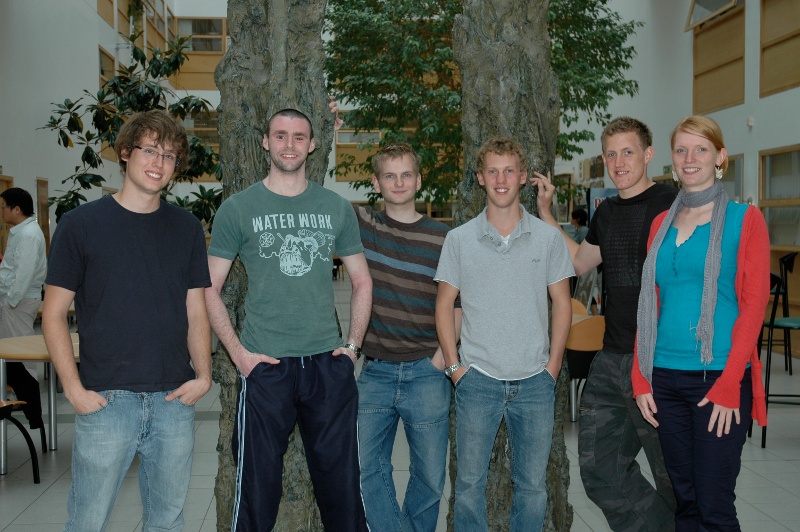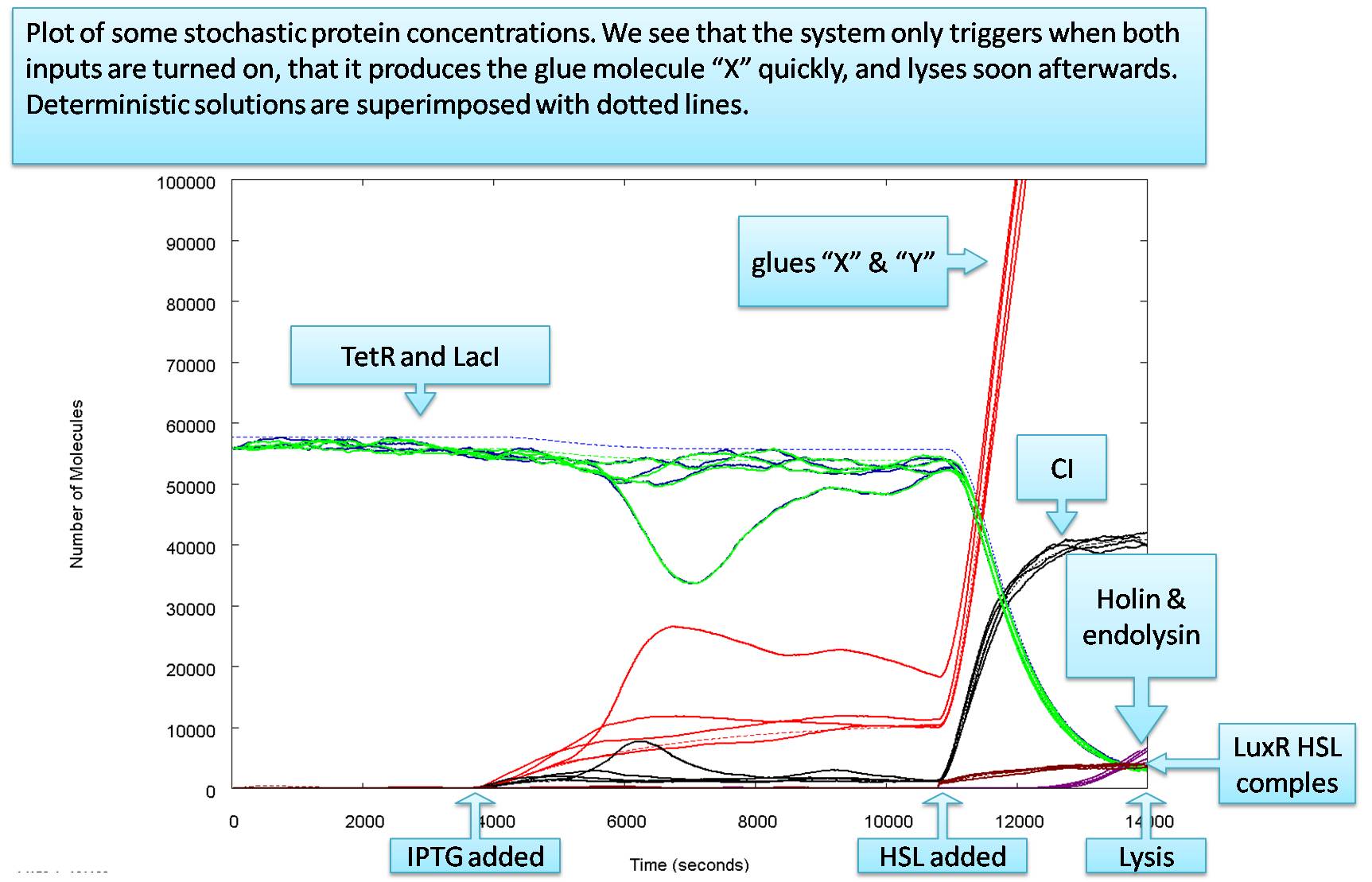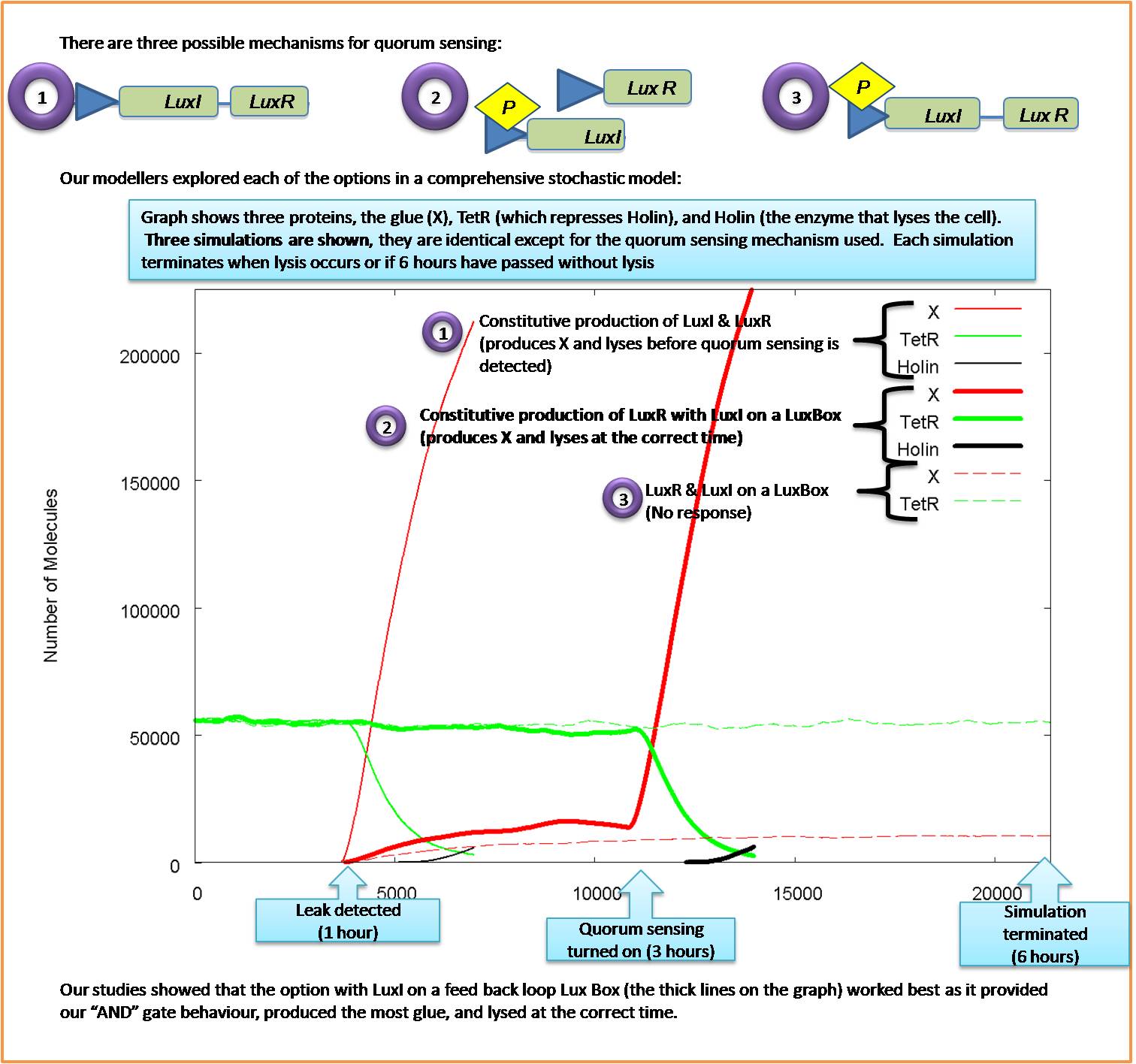Team:Aberdeen Scotland/modeling
From 2009.igem.org
University of Aberdeen - Pico Plumber
Introduction
Our modeling team consists of six undergraduates, four of whom study maths and physics, one studying physics and one chemical engineering. Due to the complex nature of the project, we need good predictions from mathematical simulations to help predict and understand our system. We are mainly programing our simulations in C and Matlab but we have also used Matlab's Sim-Biology toolbox for some sensitivity analysis.

The internal dynamics described with the help of Ordinary Differential Equations. We compared the deterministic simulation results with the ones of the stochastic simulation by the tau-leap method. We also use SimBiology to model our Pico Plumber.

Modeling the chemotaxis of e. coli and how they move towards a food source.

In our system, quorum sensing is a behaviour which we wish to exploit, to do this it is essential to model the system to guarantee it responds to inputs correctly.
Conclusions
Throughout the summer, the modeling and biological aspects of the project worked well together, our main results were:
-
Guiding the biology in choosing the best design for implementing the pico plumber.
-
Effectively modeled the behavior of mRNA transcription and protein translation, using both deterministic and stochastic methods.
-
Created a probabilistic chemotaxis model, which reproduced the behavior of e.coli cells as accurately as possible. The model took into account both movement when no chemotactic gradient was sensed by the e.coli and when they had sensed a chemotactic gradient and were moving up it.
-
From our models, we concluded that the current design would not work, since it would turn on it's own quorum sensing. We then came up with two alternative designs for the quorum sensing module. We then tested them and found one which produced the required response and was far more robust to parameter changes than the original design.
-
Combined the data from the amended stochastic model with the chemotaxis model to create a combined population model to investigate the complete system behavior.
-
We proposed that a parameter database be created, so that modeling done by future iGEM teams could be done faster, more easily and more accurately by having access to a central source of biological parameters.
 Back to Wet Lab Procedures Back to Wet Lab Procedures
|
Continue to Deterministic model 
|
 "
"


